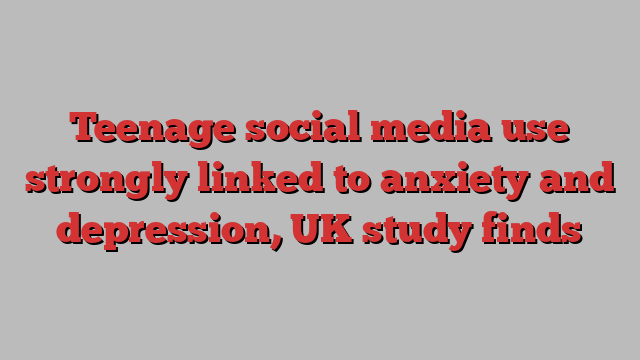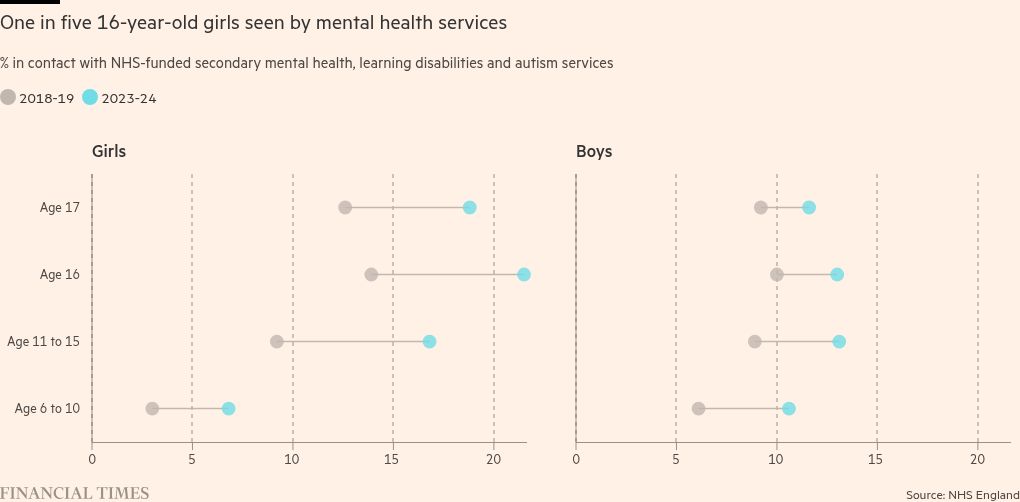
Unlock the Editor’s Digest for free
Roula Khalaf, Editor of the FT, selects her favourite stories in this weekly newsletter.
Social media use in teenagers is strongly correlated to higher anxiety and depression, according to new research, as NHS data shows the number of children being treated by mental health services has surged in recent years.
Academics from Oxford university, who are carrying out the largest global study of teenage mental health, said their initial research had found about 60 per cent of 16- to 18-year-olds spent between two and four hours a day on social media sites.
“We found a linear relationship between higher rates of anxiety and depression and time spent networking on social media sites”, said John Gallacher, professor of cognitive health, who is leading the work.
“In the most extreme cases, we had young people reporting they were spending up to eight hours a day using these sites.”
The study, which found girls report more mental health issues than boys, said the top five most frequently used social media platforms were Instagram, Snapchat, TikTok, WhatsApp and YouTube.
It also concludes that increasing sleep and exercise alone would greatly improve the mental health of this age group.
More than 7,000 teenagers participated in the initial research and about 50,000 young people aged 11-18 across the UK will take part in the full study, which will examine their mental health trajectories over a period of 10 years.
The data will create a “unique mental health map” of the adolescent population across the UK, the researchers said.

In the year ending March, there were 1.1mn children in England in contact with NHS-funded services for mental health, learning difficulties and autism, according to official figures published on Thursday. This is more than twice as many as in 2016-17, when the data was first published.
Teenage girls are the most likely to be in treatment, with about a fifth of 16- and 17-year-old girls in contact with NHS services in the year ending March. But rates have also risen rapidly for primary-school children in recent years.
Almost 7 per cent of girls and 11 per cent of boys aged six to 10 were seen by NHS-funded services in 2023-24, compared with 3 per cent and 6 per cent five years before.
“Mental illness is the world’s leading public health challenge,” said Gallacher. “It has a devastating effect on economies because it affects many, tends to start young, and recur throughout life.”
The “missing piece is the science”, he added. “For young people, the gap between evidence and policy is stark. We need large-scale cohort studies focusing on young persons’ mental health if we are to achieve change.”
To plug the gap, Gallacher said his team have launched the BrainWaves study, led by the University of Oxford, alongside Swansea University and The Day, an online daily news service for young people.
The study’s data will be accessible to scientists globally and the programme will develop lesson plans on topics such as coping with change, sleep, critical thinking and stress.
The initial study found that “agency” — defined as a feeling of control over actions and their consequences — was strongly correlated to mental health. “Both anxiety and depression are high when agency is low, and they decrease when agency is high. Wellbeing and flourishing are also strongly correlated to high agency,” it concluded.